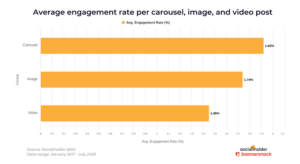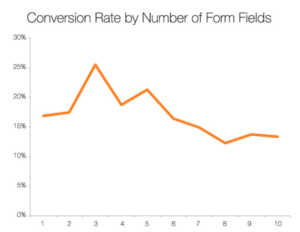Michael Calia - 04/22/2022
Thoroughly analyzing social media performance and adjusting strategies in response to insights helps optimize organic and paid content.
With social media advertising spending expected to eclipse $173 million this year, brands running social media marketing campaigns will have more competition to deal with. Without properly analyzing and optimizing social media performance in such a competitive landscape, budgets can easily be wasted.
For organic and sponsored content, analytics play a major role in the impact and success of social media marketing campaigns. Identifying strengths and weaknesses in content and optimizing accordingly helps ensure a strong ROI. Keeping an eye performance metrics will help you determine the success of the current campaign. In a previous blog, we examined important social media stats to consider when monitoring content. Now, we’re going to look at key concepts to consider when analyzing performance.
Compare Types of Content
A major benefit of social media is that it lends itself to creating and promoting multiple types of content. An effective strategy will be diverse in its forms, as different people will prefer varied types of posts and ads. Especially when you consider how different forms of content achieve different objectives, it’s important to understand how performance can vary among your audience. When looking at performance, here are some questions to consider:
- When sharing links to landing pages, what’s the average click-through rate (CTR)?
- When posting articles from third-party sources, how many times do people like comment and share?
- How many views do videos generate, and how often do people watch the entire video?
- Do videos with above-average views also receive above-average link clicks?
- Do more images bring more interactions?
Depending on the type of business you’re promoting or the types of people you’re trying to reach, different forms of content will vary in value, so there’s no one-size-fits-all approach to this. But one concept that is pretty close to universal is that you should be maximizing engagement to benefit overall page performance. Along with identifying what types of content would yield the most value to the company you’re promoting, consider what best practices say when it comes to crafting posts. While data suggests that carousel posts get the most engagement on Instagram, they may not be the best for every audience or objective. A combination of best practices and in-depth analysis of your audience’s habits and preferences will ultimately lead to more success.

Carousels have a higher average engagement rate than images and videos on Instagram. Source: Socialinsider
Defining your overall objectives and key performance indicators (KPIs) when creating the campaign will inform what types of content will be most effective. Your tactics should work to maximize your KPIs, therefore helping to reach your objectives.
By understanding how your audience reacts to specific types of posts and ads, you can plan a more successful campaign. This allows you to make more informed choices about what types of posts to utilize in certain scenarios, and what sort of results to expect.
Determine Strengths of Audiences
When promoting or “boosting” posts, each social media platform has its own set of tools and capabilities for building targeted audiences. This allows you to home in on users who fall into your target audience beyond your existing page following. Building audiences based on characteristics like age, location, employment history, and interests is a good way to build profiles of the types of people you want to reach. Understanding your ideal consumers will help you craft the best audience to enhance paid performance. When creating these audiences, it’s important to understand how user traits can vary by social media platform so consider examining the demographic details of each one before deciding which is most suitable to your campaign.
Other types of targeted audiences include those built from lists or off-platform activity, which are commonly referred to as “custom audiences.” These include but are not limited to:
- Customer email lists – target users on social media by their email addresses.
- Website visitors – use Facebool Pixel and LinkedIn Insight tag to create audiences based on those who visited or performed an action on your website.
- Lookalike audiences – create much larger audiences comprised of users that are similar to your other qualified custom audiences
If you’d like to learn more details about these processes, please head on over to my blog post about social media advertising.
Each type of audience will hold key advantages. Those based of demographic information, keywords, interests and other traits will enable an expansive reach and are great if you don’t have a data source like a large customer email list.
On the other hand, building audiences from email lists or off-platform activity will likely lead to a more qualified approach. These audiences will include previous and current customers or people who have already demonstrated an interest in your business, as well as those with similar social media activity. Ideally, your social media strategy should include multiple audiences as to determine which ones result in the best performance.
Consider What Creative Performs Well
Regardless of what you’re promoting or what audience you’re trying to reach, social media campaigns need strong copy and imagery to perform well. The creative for your ads is crucial and should clearly convey key messaging/information while standing out among others content – especially your competitors’ – to generate more attention and interactions.
When analyzing organic content, try to find commonalities among top-performing posts. The following questions can be useful for determining the aspects of the creative materials that helped improve performance:
- Did images include real people?
- Were company logos clearly present on images?
- How much text was on each image?
- What tone/language was used?
- Was the copy long or short?
- What hashtags were used?
- What language directed people to the CTA?
- Did the post copy address the audience?
- Were any other companies or pages tagged?
Knowing this information is also useful for creating strong social media ads, but there are more strategies to consider with a paid approach. When creating ads, A/B testing allows for multiple versions of the ad to run to the same audience, allowing marketers to determine which ones work best. With this in mind, it’s wise to create multiple variations of imagery to test.
Along with still photos, incorporating videos is also recommended depending on the ad objective. Because of its rise in popularity, video content has proven to be an effective tool for social media marketing. If pure engagement is your goal, video would be a strong asset. However, still images often result in more link clicks than videos.
The true value of the type of content will depend on your audience’s preferences, so test both and monitor their performance to determine the winner. The same logic applies for copy and CTA language. While best practices often say to keep things short and direct, a more technical audience may appreciate greater detail in post copy. As you’re monitoring variations, be sure to pause the lowest performing ads so the remaining budget can reallocated to the stronger ads.
Track Off-Platform Activity
As I mentioned earlier, tools like the Facebook Pixel, LinkedIn Insight tag and Google Analytics can be tremendously beneficial for social media marketing. Though privacy settings are making things a bit more difficult for marketers – something we looked at in another blog post about Apple’s iOS updates – these tools provide useful information during the analytics stage that can help gauge the success of certain campaigns.
A common objective in social media advertising campaigns involves driving people to a landing page to take a specific action, such as make purchases, download materials or fill out forms. When implemented properly, the Facebook Pixel and LinkedIn Insight Tag can track how many people actually took this desired action as a direct result of your social media ads. Monitoring this data enables full-scale analysis of user activity from seeing and/or clicking on the ad to converting and becoming a customer. This can help determine how strong your promoted assets are in driving users to take the desired actions on your landing page.
Generating conversions depends on the successful combination of multiple factors. The audience targeting must be accurate enough to include people who would be most interested in the information, materials or offers being promoted. The ad copy and creative must be compelling enough to pique the audience’s interest and persuade them to click through. The “carrot” must be valuable enough to encourage people to make a purchase, download, fill out a form or whatever the desired action may be. And lastly, the landing page itself must be built in a way that makes the conversion as easy as possible and properly tracks it.

Too many form fields cause conversion rates to decrease. Source: Hubspot
It’s not uncommon to see a campaign attract plenty of clicks and engagements only to fall flat when it comes to conversions. Unless your ad creative is deliberately misleading your audience, this occurrence most likely indicates a landing page issue. One example is page load speed, which is known to affect users’ likelihood to convert. In fact, WalMart, COOK and Mobify all saw improved conversion rates with reduce page load time. And as for the build of the page itself, multiple aspects can affect conversion rates, such as form placement, number of fields, messaging and so on. By keeping track of how the social media ad performance compares with the off-platform activity, you can identify which elements need the most attention or adjustment.
Running a successful social media marketing campaign requires constant optimization. Properly adjusting tactics and allocating ad spend toward the strongest materials will maximize ROI and ensure that your campaigns effectively reach KPIs.
If you are looking for support or guidance for your next social media marketing campaign, you can contact us here.
